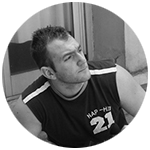Serata con l’amica Carmen. Peccato sia durato troppo poco (:
Qualche giorno fa alla festa di Miele ne ho approfittato per marchiare la lavagna con un noto pennarello indelebile. Stasera é toccato al tilt. Post-it sparsi per i bar di avellino. Devo inventarmi qualcos’altro.
A beautiful song by Matthew Perryman Jones
How can I forget you
The memories come and go
You’re all I’ve ever wanted
You’re all I’ve ever known
Can I be happy
Living with your ghost?
The pictures tell the story
I took them off the wall
It’s hard enough to get through
I still can feel the fall
Do you even think of me at all?
I want you
Only you
I could start it over
And find somebody new
A beautiful distraction
Just a hand to hold on to
But if you ask me,
Would that love be true?
No, I want you
Only you
I want you
Only you
I wanna taste you again
Like a secret or a sin
Breathin’ out breathing in
There’s no one else for me
But you
Only you
And I want you
Only you
And I want you
Only you
Oh I want you
Only you
And I want you
Only you
21mbit video at 59,94 fps – h264 – 1280 x 720 Progressive
Placing of Markers (smaller closer and larger on the distant wall) – FAILED ON CLOSE WALL
Placing of Markers on the hood (Driver’s head)
Retention of the distance of a pair of background trackers and hood trackers for a correct scene scale
Testing of a possibile shots and choice of a fixed focal length
Different shots at 59fps, hd to reduce the rolling shutter on the sensor (less lines to scan)
Some 360 photos for HDR reconstruction, needed for a correct illumination and the reflex on the helmet
Some 360 photos for the Helmet reconstruction.
Removal of Rolling Shutter, Camera Tracking and estimation of the focal length (MISSING CHECKERBOARD REFERENCE)
Again, from the source, Removal of Lens distortion calculated from the previous step, Rolling Shutter, Camera Tracking, Object Solving, Scene scale and export
Removal of Distorsion on the helmet shots. Camera tracking, export
Modeling of the Helmet, creation of multiple uvs ids, texturing, painting
Scene HDR creation and tone mapping.
Integration of the helmet in the scene, animation, lighting and rendering (material passes, ambient occlusion, object mattes,motion blur vectors)
Compositing, trackers removal and general fixes.
Color grading.
Le spline sono linee digitali create dai differenti software di computer grafica. Matematicamente le spline vengono generate grazie ad equazioni vincolate da punti chiamati control points o control vertex. Questi punti determinano l’andamento della curva. Le spline sono usate in molti ambiti, dal semplice fotoritocco per nascondere parti di immagini fino al complesso rotoscoping per i film.
Per ogni punto della spline abbiamo una maniglia, handle, che ci permettere di modificare l’andamento della curva passante per il punto scelto. Queste maniglie sono tangenti alla curva e la lunghezza ne determina la pressione sulla curva. Una maniglia si definisce morbida se entrambi i segmenti della tangente (a sinistra e a destra del punto) fanno parte della stessa linea. L’allungamento dei segmenti ne comporta una variazione nella pressione sulla curva aumentando o diminuendo la curvatura della spline in prossimità del punto.

Le maniglie possono venir spezzate in due segmenti aventi in comune solo un punto della curva. La maniglia definita broken romperà quindi l’assetto di curvatura della spline regalando un comportamento asimmetrico e una maggiore flessibilità per l’utente.
La curvatura della spline può essere linear, bicubic, etc. Un curvatura lineare fa si che le linee che congiungono due control point siano segmenti. Bicubic invece ne assicura una maggiore interpolazione prendendo più punti in considerazione.
Ogni punto può essere animato singolarmente in ogni frame ma in generale conviene valutare il sorgente prima di spostare punti a caso. Se stiamo tracciando il contorno di una immagine che varierà prospetticamente di poco nel video, ci converrà operare sulla traslazione, rotazione e scala dell’intera curva anziché operare sui singoli cv.
Il workflow è infatti quello di agire sulle componenti matriciali di tutta la curva per poi migliorare ogni singolo cv in un secondo momento, ereditando le trasformazioni dell’oggetto. Più difficile a dire che a fare ma è importante capire che analizzare un footage è di estrema importanza. Buttarsi su un rotoscoping di 1000 frame muovendo ogni singolo cv può essere dispendioso in termini di tempo e insoddisfacente in tempi di qualità; i cv potrebbero vibrare e muoversi indipendentemente dalle forme dell’oggetto rendendo la maschera imprecisa e fastidiosa da vedere.
My name is Giovanni Di Grezia, but people call me xgiovio.
Here is my homepage: https://www.xgiovio.com.
I am a VFX Artist and Software Developer
And this is a picture of me.
